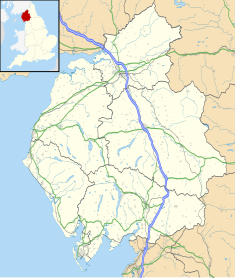History
The construction of the building was an initiative by the locally-born industrial chemist, Hugh Lee Pattinson, to create an events venue in the town. It was built and financed by a specially formed company for which he was one of the largest subscribers. [2] The site chosen was a large rectangular piece of land known as the Vicarage Croft, [3] [4] which was donated to the company by the trustees of Greenwich Hospital. [5] [a]
The foundation stone for the new building was laid by Pattinson in 1857. [2] It was designed by Alfred Burdakin Higham of Newcastle upon Tyne in the Gothic Revival style, built in rubble masonry at a cost of £2,000 and completed in 1858. [7] The design involved an asymmetrical main frontage with five bays facing onto Front Street; the third bay from the left was formed by a four-stage clock tower with an arched doorway in the first stage, a two-light mullioned and transomed window in the second stage, a small rectangular window in the third stage and a square turret with clock faces in the fourth stage: the tower was surmounted by a pyramid-shaped roof. The quarter-chiming clock was manufactured by T. Cooke & Sons of York; it struck the hours on one bell and the quarters on two smaller bells. [8] The second and fourth bays were gabled and the fourth bay featured a large four-light mullioned and transomed window with tracery: the window was flanked by niches. [1] Internally, the principal rooms were the main assembly hall, a courtroom, facilities for the local mechanics' institute and a reading room. [7] [9]
Following significant population growth, largely associated with the status of Alston as a market town, the area became an rural district with the town hall as its headquarters in 1894. [10] The town hall continued to serve as the headquarters of the rural district council for much of the 20th century, [11] but ceased to be the local seat of government when the enlarged Eden District Council which was formed in 1974. [12]
The building subsequently became home to the local tourist information office and also accommodated a branch of the Trustee Savings Bank until the late 1980s, [13] while the local public library, which had relocated to the Market Place, returned to the town hall in 2008. [14]
This page is based on this
Wikipedia article Text is available under the
CC BY-SA 4.0 license; additional terms may apply.
Images, videos and audio are available under their respective licenses.

